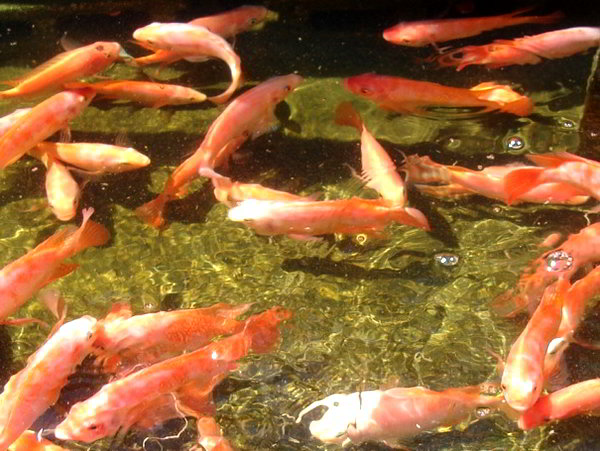The appealing color of red tilapia makes its slow recognition as an important fish species for aquaculture. Coming from its name, red tilapia displays a range of pink to red color.
Improved breed of red tilapia

Farming of the said fish is limited, possibly because of the unavailability of quality fingerlings for stocking.
The limited supply of red tilapia in the local market also makes the fish relatively unknown to the general consumers.
To stimulate the culture and market demand for red tilapia, developing bigger and more appealing breed of red tilapia has been initiated and undertaken by the Freshwater Aquaculture Center in Central Luzon State University (CLSU) in Muñoz, Nueva Ecija.
Preparing bigger and more attractive tilapia adds value to the fish not only in the Philippines but also in Malaysia, Indonesia, Thailand, and China. Among the different farmed tilapia, red tilapia has the potential qualities to satisfy the increasingly selective taste of consumers.
Red tilapia is the same as gray tilapia. Red tilapia, which lacks melanin cells to enable it to display the usual grayish black color, is produced artificially in fish hatcheries. The mutant fish, which rarely appears in hybrid offspring of different tilapia species (i.e. Mozambique tilapia x Nile tilapia, Blue tilapia or Tilapia hornorum) was isolated and selectively developed to exhibit its present red color. However, because only few individuals constitute the original fish population, it resulted in inbreeding and reduced growth.
The initiative of developing bigger and more appealing breed of red tilapia is part of the Broodstock Enhancement of Red Nile Tilapia (RNT), a core project under the National Tilapia Research and Development Program funded by the Department of Science and Technology (DOST) and coordinated by the Philippine Council for Agriculture, Aquatic and Natural Resources Research and Development (PCAARRD).
Studies showed that crossing RNT and Freshwater Aquaculture Center Selected Tilapia (FaST) produces improved breed of red tilapia with the desired red color and fast growth traits. The pure RNT as breed has been found to have the poorest growth among all the red tilapia collected.
Findings further showed that the different breeds of red tilapia collected in Laguna, Batangas, Zambales, and Muñoz, Nueva Ecija have exhibited different growth performance. Crossing the best performing red tilapia breeds produced offspring with better growth than the average growth of the parents.
The reciprocal cross of Zambales and BFAR Laguna also showed better growth of the offspring than the average growth of the parents. The offspring of BFAR Laguna female and Zambales male grew by 59.35% (28.89 grams) better compared to average growth of the parents (18.13 grams) while the offspring of Zambales female and BFAR Laguna male grew by 23.16% compared to the parents.
by Norida P. Samson, DOST-PCAARRD S&T Media Service

